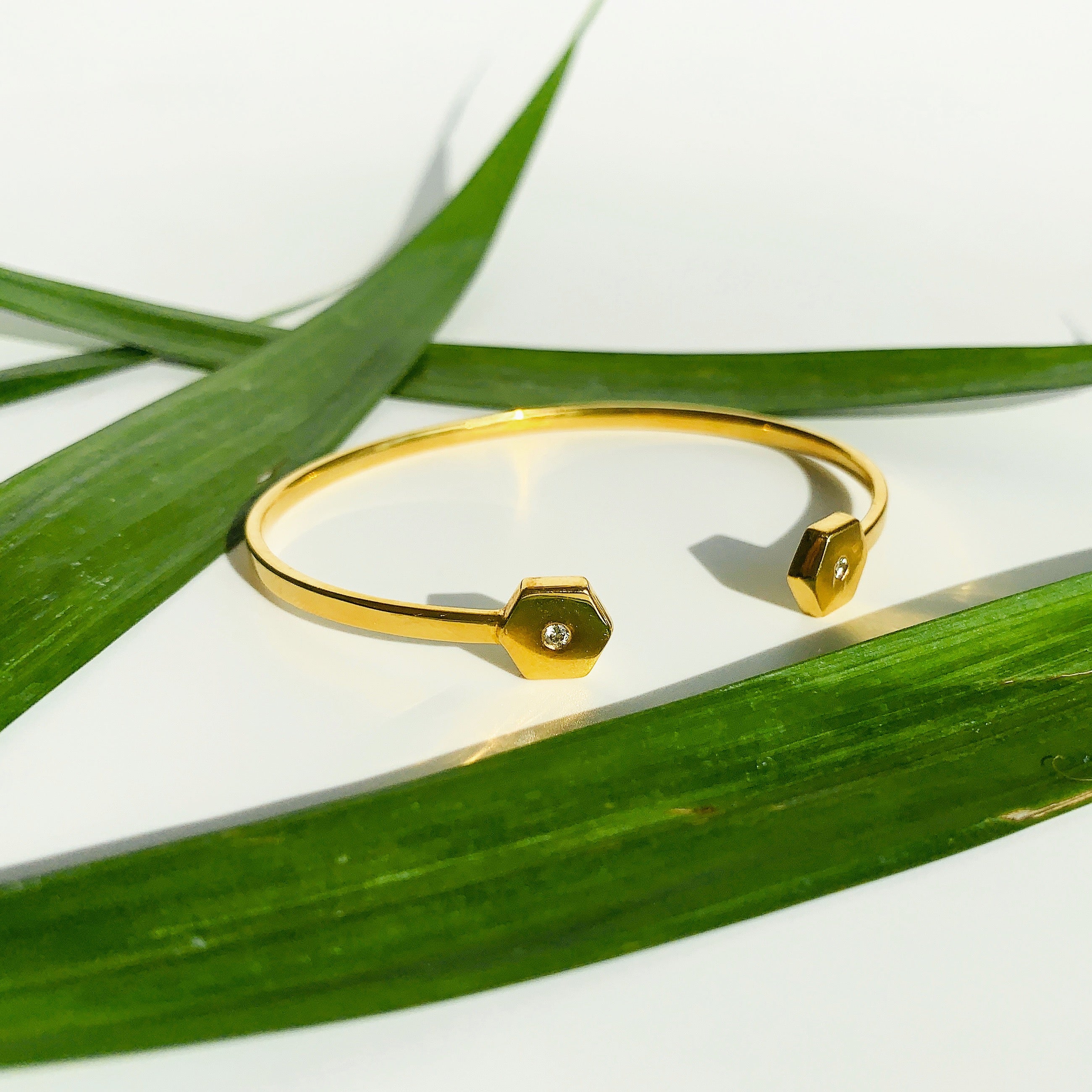
Is it pure gold?
A Brief Explanation of Gold Purities, Karats and Hallmarking
You may have heard the terms purity, karat, hallmark being used whenever someone talks about gold. So what does it mean exactly? And why do people insist on gold being “pure”? Here is some useful information which I have simplified to help you wrap your head around this jewellery industry jargon and the mathematics, physics and chemistry behind different gold purities and their value.
Let’s understand the terminologies first. Karat, denoted by k (pronounced “carrot” and not to be confused with 'carat' which measures a diamond's weight) is a measure of the percentage of pure gold in an item. A Hallmark is a stamp on an item of gold that guarantees its purity. In India, hallmarking is regulated by the Bureau of Indian Standards (BIS) and all hallmarked items must have the BIS hallmark logo engraved on them next to a number depicting the purity.

24k is the highest purity of gold which means that a particular item, such as a coin is made up of 99.9% gold. All other purities such as 23k, 22k, 18k and lower are essentially alloys of gold and other metals such as silver, copper, nickel, palladium etc.
To illustrate, imagine you have an 18k ring. To calculate the amount of gold, you simply have to divide the purity by 24 and multiply by 100. So your ring has 18/24 x 100 = 75% pure gold in it. The remaining 25% is a a mix of other metals.
 Cost Advantages of Lower Purities
Cost Advantages of Lower Purities
From a consumer’s point of view, a major advantage of lower purities is the considerable reduction in the cost of the jewellery. There is a positive linear relationship between gold purity its cost (see graph below). Jewellers only charge you for the gold component in your jewellery item (plus any making charges). Therefore, due to lower gold content, an 18k item of jewellery will cost 25% less than a 24k gold item of the same weight.
 Although 24k gold is preferred for investment purposes, in reality, all purities of gold can be considered an investment. As long as a percentage of pure gold is present in your item of jewellery, its value will appreciate as the market rate of gold rises. To illustrate (see graph above), if you have a 9k bracelet that weighs 1 gram, the amount of pure gold in it would be 9/24 x 10 = 0.375 grams. So you can easily sell your 9k bracelet to a gold buyer in the future when the gold rate rises and get paid for the 0.375 grams of gold at the market rate.
Although 24k gold is preferred for investment purposes, in reality, all purities of gold can be considered an investment. As long as a percentage of pure gold is present in your item of jewellery, its value will appreciate as the market rate of gold rises. To illustrate (see graph above), if you have a 9k bracelet that weighs 1 gram, the amount of pure gold in it would be 9/24 x 10 = 0.375 grams. So you can easily sell your 9k bracelet to a gold buyer in the future when the gold rate rises and get paid for the 0.375 grams of gold at the market rate.
*This information pertains to solid gold items only and does not apply to gold plated or gold vermeil items.












1 comment
To the point and very well articulated. :)
Aviral
Leave a comment
This site is protected by hCaptcha and the hCaptcha Privacy Policy and Terms of Service apply.